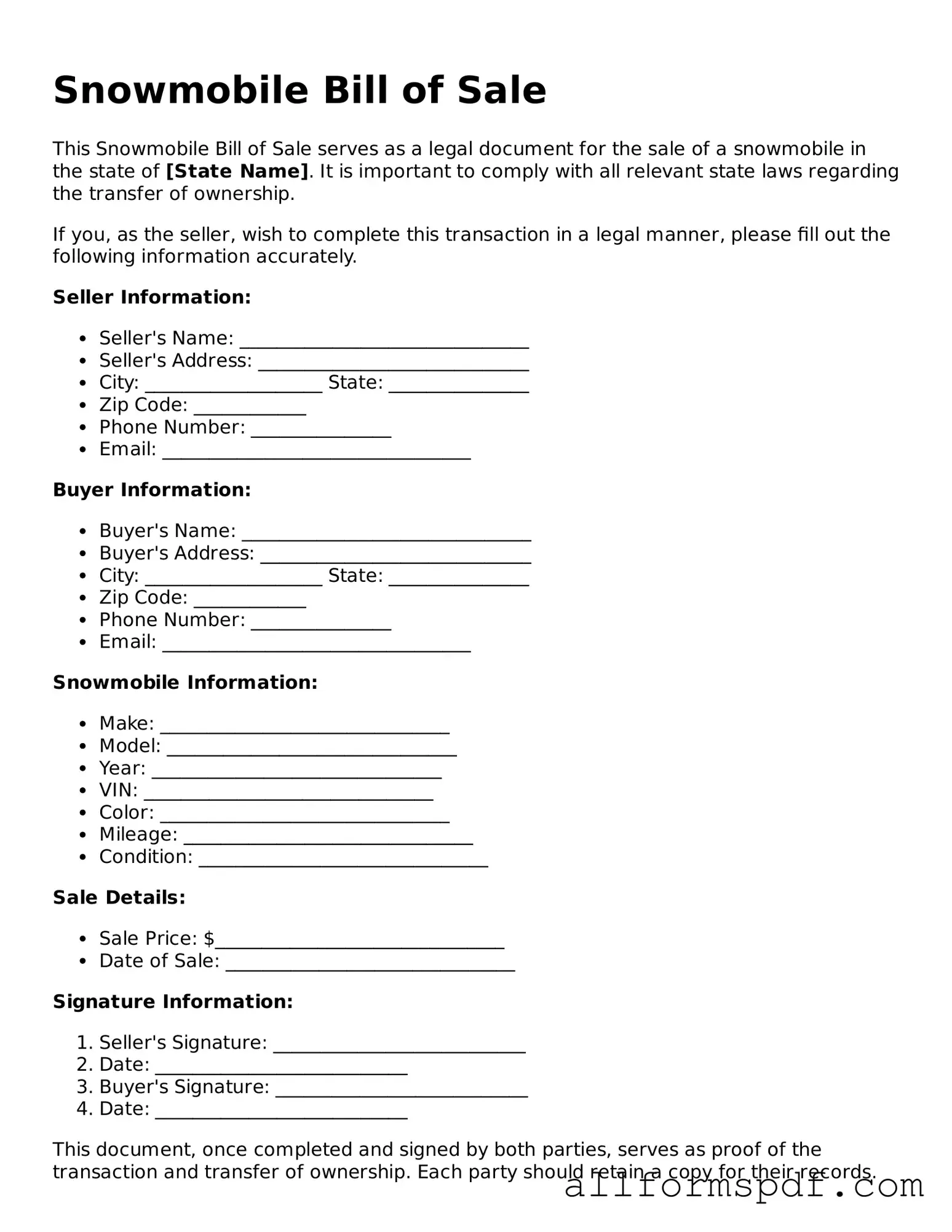Filling out the Snowmobile Bill of Sale form can seem straightforward, but many people make mistakes that can lead to complications later on. One common error is failing to provide accurate information about the snowmobile itself. This includes the make, model, year, and Vehicle Identification Number (VIN). If any of this information is incorrect or missing, it can create issues with registration and ownership verification.
Another frequent mistake is not including the purchase price. Leaving this section blank can lead to misunderstandings between the buyer and seller. It’s important to clearly state the amount agreed upon to avoid disputes. Additionally, both parties should ensure that the price is written in both numbers and words for clarity.
Some individuals overlook the importance of signatures. Both the buyer and seller must sign the document for it to be valid. Without these signatures, the sale may not be legally recognized. Moreover, it’s crucial that the signatures are dated correctly. A missing date can create confusion about when the sale occurred.
Many people also forget to include the date of the transaction. This detail is essential for record-keeping and can be important if any legal issues arise later. It establishes when the transfer of ownership took place and can help resolve any future disputes.
Another mistake involves not providing contact information for both parties. Including full names, addresses, and phone numbers helps ensure that both the buyer and seller can reach each other if necessary. This information can also be useful for the authorities if any issues come up regarding the snowmobile.
Some individuals fail to check local laws regarding the sale of snowmobiles. Different states may have specific requirements for the Bill of Sale. Not adhering to these regulations can lead to problems with registration or ownership claims. It’s always wise to double-check what is required in your area.
Finally, neglecting to keep a copy of the completed Bill of Sale is a common oversight. Both the buyer and seller should retain a copy for their records. This document serves as proof of the transaction and can be vital if questions arise in the future. Keeping organized records can save a lot of trouble down the line.
